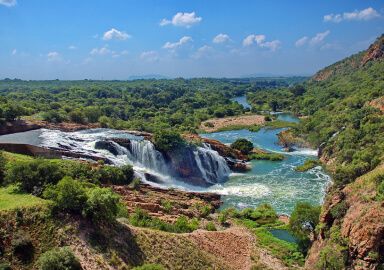Barbel
Barbel is a little-known freshwater species, excellent for sport angling, and found in many of the larger rivers of Europe
View 14 listings
14
listings
–
price starting from
9
countries
–
to the nearest trip
Where and When?
Barbel are inhabitants of medium to large rivers, and occasionally dams and lakes, in Europe in watersheds that drain into the North, Mediterranean, Black and Baltic seas. They have also been introduced in England to some large, westward-flowing rivers. They prefer “mild” temperatures and are not often found in waters that freeze in winter. Juvenile specimens are found in shallow and upstream waters, while the larger fish generally gravitate to deeper, slower moving, waters. Juveniles are usually dispersed, but larger fish often aggregate around cover such as under overhanging trees and banks. Most barbel are caught in summer and the species often “disappears” during winter, probably into deeper water, where they feed less. The best barbel fishing is around and after spring spawning and into autumn/fall. In terms of “time of day” - larger barbel tend to feed early, sometimes very early, in the morning and towards sundown. Smaller specimens appear to feed and so can be caught throughout the day.
About Barbel
The “original” and best known barbel, Barbus barbus, is a medium sized freshwater fish of Europe. The name is also locally used for diverse other species that have “barbels” on their mouths, but the original one is now a prime recreational fishing species in areas in which it occurs. European barbel are fairly round, torpedo-shaped fish with small toothless mouths slightly below the front of their heads with obvious “barbels” on either side. They are brownish with small, darker spots on their top and flanks and are paler on their bellies. They have been reported to reach 120 cm. (47.2 in.) and a mass of 12 kg. (26.5 lbs.) but fish of 30-50 cm. (12-20 in.) are much more common. They eat mostly “benthic invertebrates” which is an assortment of bottom living insect larvae, molluscs, worms and crustaceans, but they also occasionally eat small fish and plant material. They migrate upstream in spring to shallow riffles over gravel where up to 200 individuals spawn together.
How to Catch?
Barbel fishing is usually carried out in the daytime on fairly larg clearwater rivers. While smaller specimens can be caught “casually” with light tackle bait fishing using small hooks, larger specimens usually require some thought, strategy and a specialised approach. Small barbel can be caught on “natural” baits such as worms, maggots and insect larvae cast into suitable areas of rivers and “drifted” with the current. Larger specimens usually prefer deeper, often fairly fast-flowing, water either at the top of, or below, large pools. For these fish it is best to use a long rod, bait-caster or fixed spool reel and braid.
Some of the best fishing entails casting well out into a river or to below cover on the far bank. The long rod enables the angler to, having cast out, place his rod pointing up in a holder to reduce the drag of the current on the line. Braid is thinner than nylon, reducing water resistance. A single small hook, baited with worm, maggot or specialised bait, about a meter below a swivel and with a large weight above, can secure the bait in the current, among the fish and entice them to bite. A container that “chums” the water with suitable bait can be attached to the weight. Barbel can grow to substantial size, and hooking, playing and landing a large barbel is a significant fishing achievement, that requires quite an investment of thought, time, and specialized equipment.








